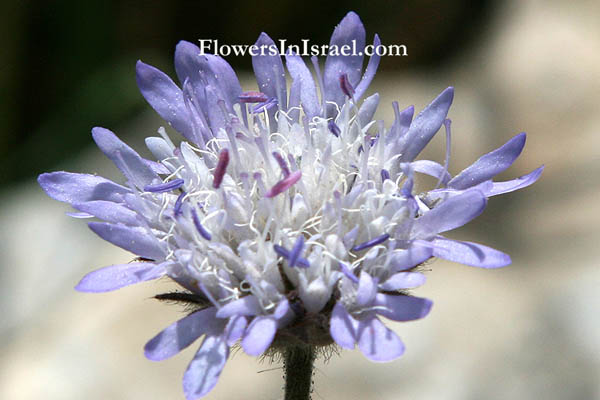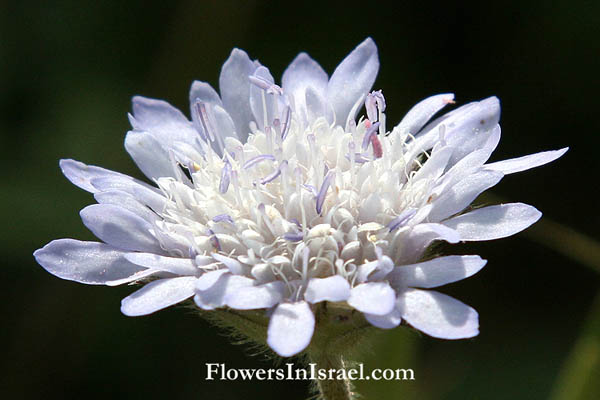Whole-leaved scabious, חוגית תמימה
| Scientific name: | Knautia integrifolia (Coulter) Greuter | |
| Synonym name: | Knautia bidens (sm.) Lindley | |
| Common name: | Whole-leaved scabious | |
| Hebrew name: | חוגית תמימה, קנאוטית שתי-שנים | |
| Family: | Dipsacaceae, שלמוניים |

|
| Life form: | Annual | |
| Stems: | 30-60 cm tall; stem covered with downward directed hairs in its lower part | |
| Leaves: | Opposite, entire, dentate or serrate margin | |
| Inflorescence: | Each flowering stem carries only one or three heads | |
| Flowers: | Blue, violet; Involucre of 8-12 bracts ovate, pointed, ciliate, shorter than the head; head flattened in its upper part; flowers in rays on the margin with very unequal lobed corolla; Involucel of the calyx ending into teeth | |
| Fruits / pods: | Achenes, hairy | |
| Flowering Period: | April, May | |
| Habitat: | Batha, Phrygana | |
| Distribution: | Mediterranean Woodlands and Shrublands | |
| Chorotype: | Mediterranean | |
| Summer shedding: | Ephemeral |

Derivation of the botanical name: Knautia, after Dr. Christopher Knaut (1638 - 1694), a German (Saxon) botanist. integrifolia, integri, entire; folius, leaves; with entire leaves. bidens, bis, twice; dens, a tooth; 2-toothed. חוגית, hugit, circle.
|